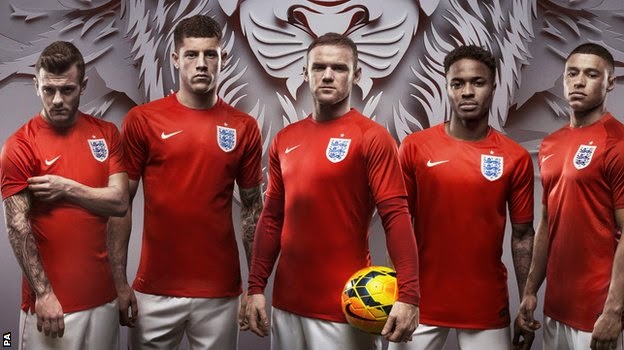 |
| There appears to be a small child trying to escape from Wayne Rooney's abdomen |
Most of the value of the product is bound up in the price. The higher the price, the more people aspire to own it, the more valuable it becomes.
There is, of course, a cut-off point at which a majority of potential customers will walk away, and this is where it gets clever. Ninety pounds for an England shirt is most likely well above that cut-off point. But who is actually going to pay the full amount?
Only the rich and stupid will be ordering them full price from the Nike website. No retailer is going to be buying these shirts in at £45 per unit, giving them huge scope for discounting. Many thousands of people this summer will be wearing official £90 football shirts they picked up from a discount retailer for closer to £60, believing they have won themselves a bargain in the process.
Ninety quid for the 2014 England Football Shirt is nothing to do with profit margins and everything to do with marketing and PR. Given the likely minuscule manufacturing cost, it barely matters to Nike's accountants whether they sell a million shirts at ninety quid or two million at forty-five. Announcing the new England shirt at an essentially unaffordable price is a strategic decision made in order generate acres and acres of publicity.
And it's worked. The new rip-off England shirt is now part of the national conversation. The media is happy because it's got something to talk about, the politicians are happy because they can position themselves as being on the side of the poor football fan, incapable of not buying a new shirt every time it comes out. The fans are happy because they've got something to moan about. The retailers are cock-a-hoop because they've got so much scope for discount, yet can still preserve their margins.
The manufacturers are happy because any lingering idea that Umbro made England's shirts (which they did for more than 50 years) is being swiftly blown away. The Nike and England brands are in the process of being indelibly associated with each other.
And of course, everyone knows there is a new England shirt out. When we see it on sale for £60 at our local retail shed, we will at least go and have a look to see what the fuss is about. Ker-ching.
Yes it is another example of multi-national conglomerates turning powerful notions of identity, pride and common national experience, into a grubby, exclusionary, commercial process. Yes the whole sordid charade strips another shred from the twitching corpse of uncommodified social experience. Yes by explicitly introducing the concept of first ("match") and second ("stadium") class supporters the manufacturers are suggesting those who can't afford the top dollar shirts are not fit to wear them. Yes the wholesale capture of sport by capitalism is a degrading and dehumanising thing.
But we keep going back for more, don't we?
So who's the sucker?
.
beautiful t-shirt.
ReplyDeleteThanks
T-shirt Photography